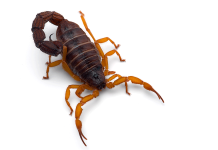Coronaviruses are the types of viruses that are named so because of the crown-like spike proteins over the surface. Six new strains of coronaviruses detected within the Myanmar bat population. These previously undescribed type of coronaviruses are still not understood. It is still unknown whether these strains can jump from one specie to another. It is still unknown regarding these viruses whether they are capable of infecting humans or not. Researchers have, however, come up with the new data that these viruses although they are the strains of coronaviruses, do not result in Severe acute respiratory syndrome, COVID-19 or Middle East respiratory syndrome. according to the study published in a peer-review journal, PLOS One it explains that according to the latest findings, we assume that bats have thousands of coronaviruses within the, which are still not discovered. it is also stated that novel coronaviruses can transmit from animals to humans and from humans to humans.
Also Read: Can you catch Coronavirus twice ?
PREDICT project which is a US-based operation i.e. USAID (United States Agency For International Development) comprising of an international team of scientists which is designed to discover new viruses that have the potential of causing a pandemic. These virus strains were detected in Linno Cave and the saliva and fecal excretions were derived from 464 bats and that too 11 species. The bats are mammals that have a unique lifestyle and serve as a natural reservoir for the viruses which can result in public concern.
VARIOUS SPECIES OF CORONAVIRUSES FROM MAY 2016- AUGUST 2018:
From 2016 to 2018, many researchers have identified several species of bats and have collected more than 750 salivae along with the fecal samples to check the viruses and zoonotic diseases in such animals. These test samples were then checked in comparison to livestock and humans as well as to other types of coronaviruses. The latest data identifies the six latest novel coronavirus strains, out of which three are alpha coronaviruses and three latest beta coronaviruses out of which one alpha coronavirus was found for the first time within Myanmar and other southeast Asian countries. Suzan Murray who is the director of Smithsonian’s Global health program and co-author of the study said that there are many coronaviruses which may pose a risk to human beings, but when these diseases are identified in its early phase within animals then we have the valuable source to investigate the potential threat among humans. Research, education and vigilant surveillance are among the best tools which can be utilized to prevent any pandemics before they occur.
Also Read: Immune system can fight back Coronavirus
CORONAVIRUSES:
Coronaviruses are the type of viruses that belong to a large family. Some of these viruses cause illness within animals while few of them jump from animals to humans in the case of MERS, SARS-COV-2, and others. SARS-COV-2 is the responsible coronavirus for COVID-19 respiratory disease. Coronaviruses are under high scrutiny and biosurveillance globally to find out the emerging diseases which are responsible for a negative impact on the human health and financial stability of the nations worldwide. Three-quarters of most of the deadly infectious diseases are zoonotic which means these diseases can transmit from animals to human beings. These zoonotic diseases pose an immediate threat to humans because they frequently interact with wildlife. Bats belong to the wildlife are of great interest because they can fly for a longer period and travel to great distances. The bats have the tendency to aggregate into dense populous colonies. Studies further indicate that bats are highly linked to the pathogenic viruses such as coronaviruses, Marburg Filoviruses, Hemorrhagic Ebola virus, and paramyxoviruses.
FURTHER STUDIES AND INVESTIGATION REGARDING THE TRANSMISSION OF DISEASES WITHIN DIFFERENT SPECIES:
Marc Valitutto who is a former wildlife vegetarian with the Smithsonian’s Global Health Program and lead author of the study said that viral pandemics after every few years remind us of the fact that how closely we humans are associated with the wildlife health and their environment. He also stated that worldwide humans have an interaction with the wildlife and that too with increased frequency. So it indicates the more we get to know about the viruses in animals, how they mutate and transmit to other species, the better we can do to reduce the pandemic potential of the zoonotic diseases.
These findings provide us with the insight that serves as helpful policies on primary ways to reduce the transmission of the disease from bats to humans and keep them safe. Future studies and research help us in determining the potential risk of transmission of the disease across different species to understand the broader risk over human health.
References : Journals, OHI, Healthmap, Nationalzoo, Nationalzoo, CDC, JVI, NYTIMES, NCBI




















